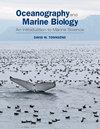EXPLOITATION AND CONSERVATION OF ECHINODERMS
1区 生物学
Q1 Agricultural and Biological Sciences
引用次数: 54
Abstract
The phylum Echinodermata contains some of the most charismatic benthic marine invertebrates and has become a symbol of marine life. However, growing global pressures on the collection of echinoderms for various commercial enterprises have put these enigmatic invertebrates under threat. This review summarises the demands on echinoderms from commercial fisheries, aquarium and souvenir trades, as part of the global search for bioactive compounds from marine organisms, and as experimental models in evolution and toxicology, and highlights the urgent need for an integrated global strategy for their protection and conservation. Sea urchins and sea cucumbers are fished commercially worldwide. Increased landings, limited information on population biology and lack of stringent management of the fisheries have resulted in a global decline of populations. In addition to being a target species for commercial fishing, many echinoderms form part of the significant by-catch produced from the general use of fishing hardware. Even when they are not caught directly, echinoderms may be damaged to varying degrees as the gear passes over them and may be affected indirectly by the physical disturbance caused by fishing gear to the seafloor. Echinoderms are gaining popularity with aquarists and account for about 17% of the global trade. Pharmaceutical companies are constantly screening marine organisms for biochemical compounds for potential use in medicine, traditional healing and industrial applications. The marine bioprospecting industry is not regulated and, although at an early stage of development, the huge potential of echinoderms to provide bioactive products highlights the need for urgent action to regulate this kind of activity. Echinoderm embryos and larvae have been used as experimental model systems in several lines of research for more than a century, leading to significant advances in the areas of developmental biology, cell biology and immunology. In addition, echinoderms are well known for their striking regenerative capacity and have provided a valuable experimental model to identify the genes involved in the process of neural regeneration. Sea urchin gametes, embryos and larvae have also been used for fast, low-cost and reliable screening of toxic substances, and for detailed studies of their mechanism of action. One way to mitigate the commercial exploitation of wild echinoderm stocks is to develop laboratory culture methods to produce individuals for reseeding exploited populations and this is being done with sea urchins and sea cucumbers. However, releasing large numbers of captive-bred animals into the wild will undoubtedly affect the genetic composition of local populations, giving rise to important ethical issues related to the loss of a genetically unique wild stock. To aid conservation, it is necessary to improve the collection of data to quantify the extent of harvesting echinoderms and to document the location and catch data by species. It is also necessary to develop a global database of echinoderm species to summarise information on biology, ecology, threats, monitoring and conservation. Beyond increasing the number of echinoderm species to be protected, it is important to improve the conservation management of already protected species.棘皮动物的开发与保护
棘皮动物门包含一些最具魅力的底栖海洋无脊椎动物,已成为海洋生物的象征。然而,全球对各种商业企业收集棘皮动物的压力越来越大,使这些神秘的无脊椎动物受到威胁。本文综述了商业渔业、水族馆和纪念品贸易对棘皮动物的需求,作为海洋生物生物活性化合物的全球搜索的一部分,以及作为进化和毒理学的实验模型,并强调了迫切需要一个综合的全球保护战略。海胆和海参在世界各地都有商业捕捞。登陆次数增加、种群生物学信息有限以及缺乏严格的渔业管理导致了全球种群数量的下降。除了作为商业捕鱼的目标物种外,许多棘皮动物也是一般使用捕鱼器具所产生的重要副渔获物的一部分。即使不是直接捕获,当渔具经过棘皮动物时,它们也可能受到不同程度的损害,并可能受到渔具对海底造成的物理干扰的间接影响。棘皮动物越来越受到水族爱好者的欢迎,约占全球贸易的17%。制药公司不断筛选海洋生物的生化化合物,以用于医学、传统治疗和工业应用。海洋生物勘探行业没有受到监管,尽管处于发展的早期阶段,但棘皮动物提供生物活性产品的巨大潜力突出了迫切需要采取行动来监管这类活动。一个多世纪以来,棘皮动物胚胎和幼虫被用作多个研究领域的实验模型系统,在发育生物学、细胞生物学和免疫学等领域取得了重大进展。此外,棘皮动物以其惊人的再生能力而闻名,并为识别参与神经再生过程的基因提供了有价值的实验模型。海胆配子、胚胎和幼虫也被用于快速、低成本和可靠的有毒物质筛选,以及对其作用机制的详细研究。减轻野生棘皮动物商业开发的一种方法是开发实验室培养方法,以生产个体来重新播种已开发的种群,目前正在对海胆和海参进行这种培养。然而,将大量圈养繁殖的动物放归野外无疑会影响当地种群的基因组成,从而引发与失去一种遗传上独特的野生种群有关的重要伦理问题。为了保护棘皮动物,有必要改进数据收集,以量化棘皮动物的捕捞程度,并按物种记录地点和捕捞数据。有必要建立一个全球棘皮动物物种数据库,以总结生物学、生态学、威胁、监测和保护方面的信息。除了增加受保护的棘皮动物物种的数量外,改善已受保护物种的保护管理也很重要。
本文章由计算机程序翻译,如有差异,请以英文原文为准。
求助全文
约1分钟内获得全文
求助全文
来源期刊
自引率
0.00%
发文量
0
期刊介绍:
With increasing interest in the field and its relevance in global environmental issues, Oceanography and Marine Biology: An Annual Review provides authoritative reviews that summarize results of recent research in basic areas of marine research, exploring topics of special and topical importance while adding to new areas as they arise

 求助内容:
求助内容: 应助结果提醒方式:
应助结果提醒方式:


